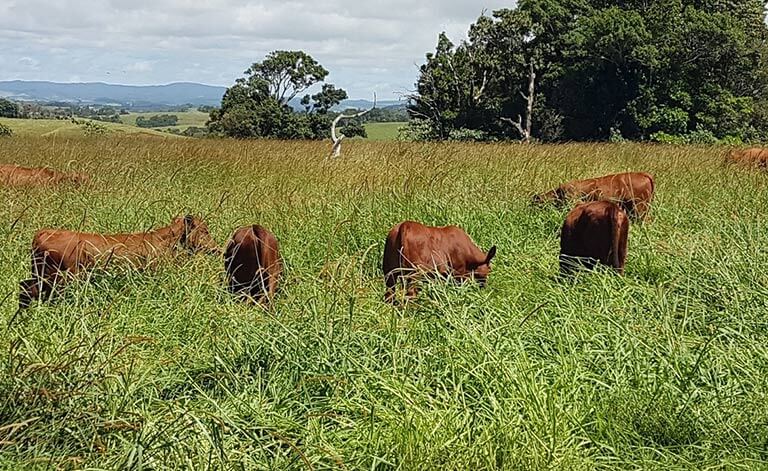Regenerative agriculture is not the sole-preserve of organic or bio-dynamics – evidence based science is key says Peter Spies.
A specialist agronomist with Thomas Elder Consulting, Peter has spent some time in the regenerative agricultural landscape, and he says he is neither conventional, nor bio-dynamic, or organic. Rather, Peter likes to consider his clients as landing somewhere on a spectrum.
“Our clients can span the continuum from conventional to bio-dynamic,” says Peter.
“I like to look at a clients’ operation, farming system, values and beliefs to find solutions to issues.”
In his line of work, Peter says that unfortunately, and to its detriment, broadacre agriculture is not always an evidence-based industry at producer level.
“Yes, there are areas where evidence drives what is done, but it is far from being widespread. Too much attention is placed on current fashions and folks searching for a silver bullet. I am into hard, measurable scientific evidence above anecdotes.”
Peter’s definition of “regen ag” is to “regenerate” and not just “sustain”. This means building soil carbon and stimulating soil biology. Growing biomass achieves this with active growing plants sacrificing up to 40 per cent of their sugars to feed microbes in the Rhizosphere and can be done through both synthetic and non-synthetic (fertilizer) approaches.
“I adhere to two rules: one, we need to build soil carbon as this increases cation exchange, moisture-holding capacity and provides a home and food-source for soil biology; and two, when using fertilizers, opt for sources that are softer on soil biology. For example, less acidifying.
“We know many synthetic fertilizers are, in fact, stimulatory on soil biology. Personally, I get tired of hearing some in the regenerative community say that synthetic fertilizers are bad. Both synthetic and non-synthetic sources have their place, especially where source and cost are considered.”

Senepol cattle grazing on Peter’s property in the Atherton Tablelands, Queensland.
On Peter’s own operation, breeding Senepol, and tropical composite bulls on the Atherton Tablelands, he utilises a combination of approaches. This includes applied biology and bacteria; incorporating legumes, and soil ameliorants to obtain high weight gains.
On the red basalt soils of the Tablelands the use of lime to correct pH is important. As the soils have high iron, and a high PBI (Phosphorus buffer index), P-solubilizing bacteria offers promise. This includes:
- Nitrogen fixing bacteria and Endophytic Trichoderma to improve growth and vigour of grasses, root development and disease resistance.
- Molasses to stimulate soil biology through protozoa.
- Catalytic micronutrient inputs such as silica, molybdenum and zinc.
According to Peter, there is nothing “mysterious” or new about these approaches – it’s what all good producers and grazing scientists have been encouraging for decades.
“You don’t need complicated grazing systems that run animals around in circles to achieve better grazing land management, livestock performance and business performance – and you don’t need to pay thousands on courses to teach you this!”
The key in both extensive and intensive pastures, Peter argues, is rest.
“You need grass to produce grass, not tax the plant to draw down on its root reserves,” he says.
“One does not need to cell or intensively rotationally graze.”
A nine-year study, conducted by the NT Department of Primary Industry and Resource at the Douglas Daly Research Farm, 220km south of Darwin, found better cattle performance on set stocked areas than intensively rotationally grazed areas. Growth of cattle was greater both per head and per hectare under continuous grazing compared to intensive rotational grazing.
“It is important however, to fence according to land type and reduce grazing pressure on better land types and manage them. Having enough watering points and strategically located to even out grazing pressure and so cattle don’t need to walk more than two to three km, depending on the country. Industry has been advocating this in extension since the early 90s!”
Conventional agriculture is neither archaic or unsustainable and new approaches must be supported by robust science and sound economics, Peter argues.
“Our libraries are full of peer-reviewed journal articles on agricultural research conducted since the 1960s that has never been successfully extended,” he says.
“The former DPI and CSIRO, through agricultural research conducted in the 1960s through to the 1990s, addressed some of the critical issues that constrained productivity. This material is a veritable goldmine for folks who are serious about undeniable evidence.
“My advice is that producers seek evidence-based approaches. Good science starts with a null-hypothesis that is either proven or not proven. Trial work is randomized to avoid bias. It is replicated and it is repeatable. Further, it is peer-reviewed. With livestock it also incorporates a control group.
“When I look at several the “regen ag” or holistic management providers I see a lot of broad statements that have no hard evidence and are just anecdotal. That is not to say regenerative ag is bad – to me it is great – but there are many that, in my opinion, are taking something that is good, is altruistic, and milking it for all it’s worth, while much of this information is publicly-available.”
“Regenerative agriculture can be done through both synthetic or non-synthetic (fertilizer) approaches. Look for the hard, quantifiable evidence rather than anecdotes.”
The approaches of Thomas Elder Consulting are based on science and leveraged with technology. The latest research findings, agronomic tools and diagnostic techniques are key ingredients in finding solutions for a clients’ enterprise. The focus is always on proactively working towards the long-term growth and productivity goals from a whole-farm system perspective.
References
[1] Schatz, Tim (2021), A comparison of the growth of cattle grazing buffel grass under two different grazing regimes: High intensity rotational grazing vs Continuous grazing.
